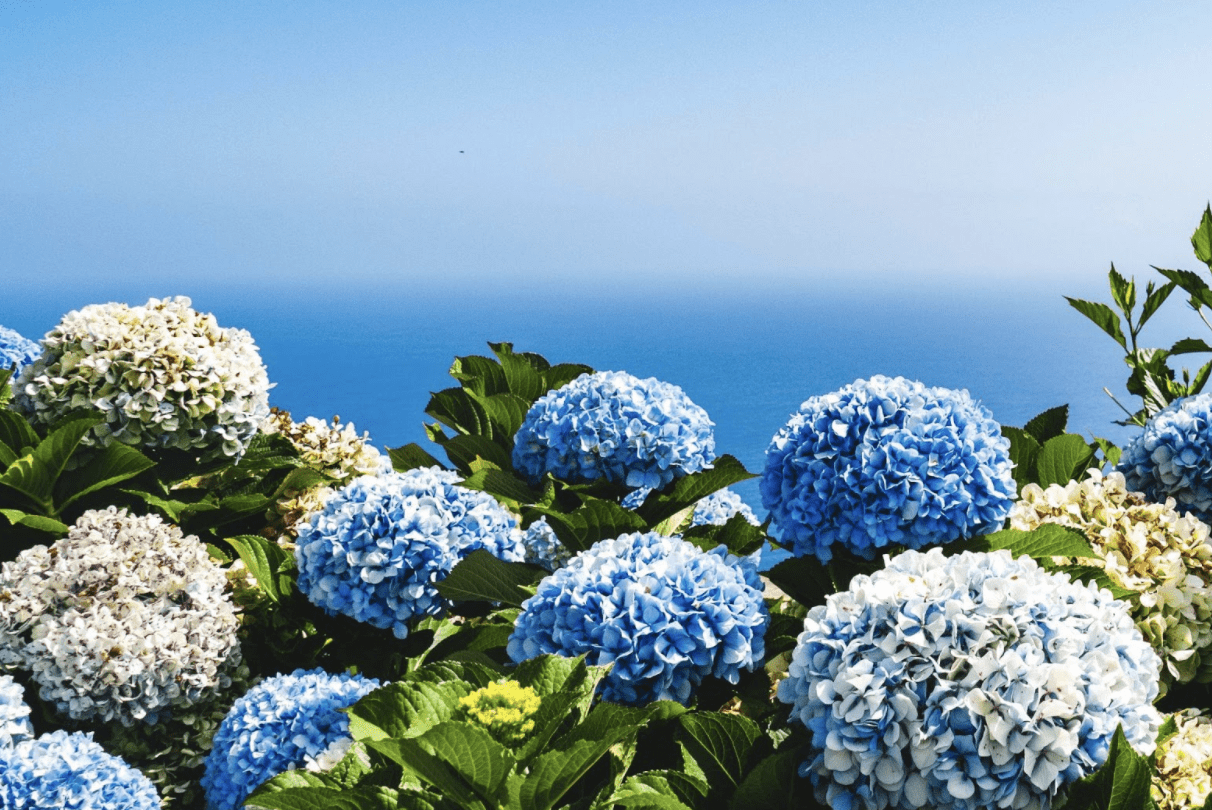You always hear the statement from plants or flower enthusiasts that flowers relieve stress. It is true to the very sense of the word. Flowers surely can relieve stress. Try it yourself and be one in celebrating the beauty of flowers.
What are the best flowers to plant? Practically, you can plant any flowers that you find lovely. Anything that will grow in the climate condition in your place. Or any flower that you find attractive for the landscape in your garden. You can choose spring flowers or sun-loving flowers. You can plant either any type, such as foliage, bulbs, shrubs, and many others.
There is an endless list, but if you choose to grow something non-dominant, woody, and densely branched, these beautiful shrub flowers on the list will perfectly complement your picturesque garden landscape.
Hydrangeas
Hydrangea, also known as hortensia, is native to the countries in Asia, such as Japan and Indonesia. There are also species coming from the mountains of the Himalayan and Americas. The plant is a widespread species, and there are various types of hydrangeas. There are over 75 species of hydrangeas and around 600 identified cultivars. Hydrangeas commonly grow as shrubs, but some species grow tall, and some even grow like vines.
The beautiful flower of this plant is what makes it popular. Its large flower amazingly blooms in many shapes, sizes, and in so many different colors that bloom in full sun. You can find hues like red, pink, green, white, blue, and purple. What’s more impressive about this flower is that it has newer spectacular varieties. And these varieties are small and unique deep colors that you would not expect to exist.
Checkerberry
The checkerberry or Gaultheria procumbens belong to low-growing shrubs that grow only up to 15 cm tall but can spread indefinitely on the ground. The flower can be the best addition to your landscape as ground cover. Its leaves adorably transform its color from green to red during the winter season. At the same time, its flowers bloom in white-pink color during summer and red berries color in autumn. The flower practically blooms in any season of the year.
Growing tips for this plant include the need for loam, sand, or moist clay soil. The soil must be well-drained, acidic, and organic. Also, the plant needs partial shade or full sun. To propagate the plant, you can use fresh seeds or take softwood cuttings from the mature stem. Once full-grown, always do necessary pruning to achieve desired form and lush of the bush.
Bougainvillea
In the 19th century, the first bougainvillea species was discovered in Europe, and later, it reached Australia. The original species are B. spectabilis and B. glabra. Another endemic species to Peru was discovered and named B. peruviana species.
Not so long after it became famous in Europe, a fancy variety grew in Cartagena, Spain. The new species was named B. buttiana in honor of the lady who discovered the species named Mrs. R.V Butt. But later, it was discovered as a natural hybrid of the Peruvian and European species.
The plant is a lushing green shrub that comes in a multitude of color hues. Among them are lilac, pink, orange, white, yellow, purple, red, violet. It blooms only on the tip of new growth, with small side shoots coming out from its branches as it ages. Under extra care, you can prune the plant to stimulate new growth and full bloom.Bougainvillea is very versatile because you can even grow an age-old plant to make it a bonsai plant.
Philadelphus (Mock Orange)
Philadelphus or commonly known as mock orange belongs to the shrub family of Hydrangeaceae. The famous garden form is known as the mock orange and sweet syringa. The plant is native to Japan, northern Asia, west of the United States, and Mexico.
Mock orange has a distinct fragrance and decorative flower which blooms in full in the late summer. It has white color and clumps of yellow stamens and dark green leaves. The plant needs partial to full sunlight under an exposed or sheltered environment. Mock orange plants grow in sand, clay, or loam, and chalky well-drained soil.
Japanese Andromeda
Japanese Andromeda has the following common name: Japanese Pieris, Lily of the valley bush, or fetterbush. It is native to Eastern China, Taiwan, and Japan. A mature Japanese Andromeda grows from 9-12 feet tall and 6-8 feet wide. Some parts are toxic if ingested, such as the branches, flowers, foliage, and seeds.
The shrub best survives in partial to full shade or indirect full sun. The soil requirement is moist and well-drained soil and needs average water and some fertilizer.
Takeaway
Shrubs make a beautiful attraction in your garden. You can find many plants in different growing conditions: different soil, sunlight requirement, and water. Always make sure to observe them, follow their growing tips and grow pretty, lush, and green plants.






